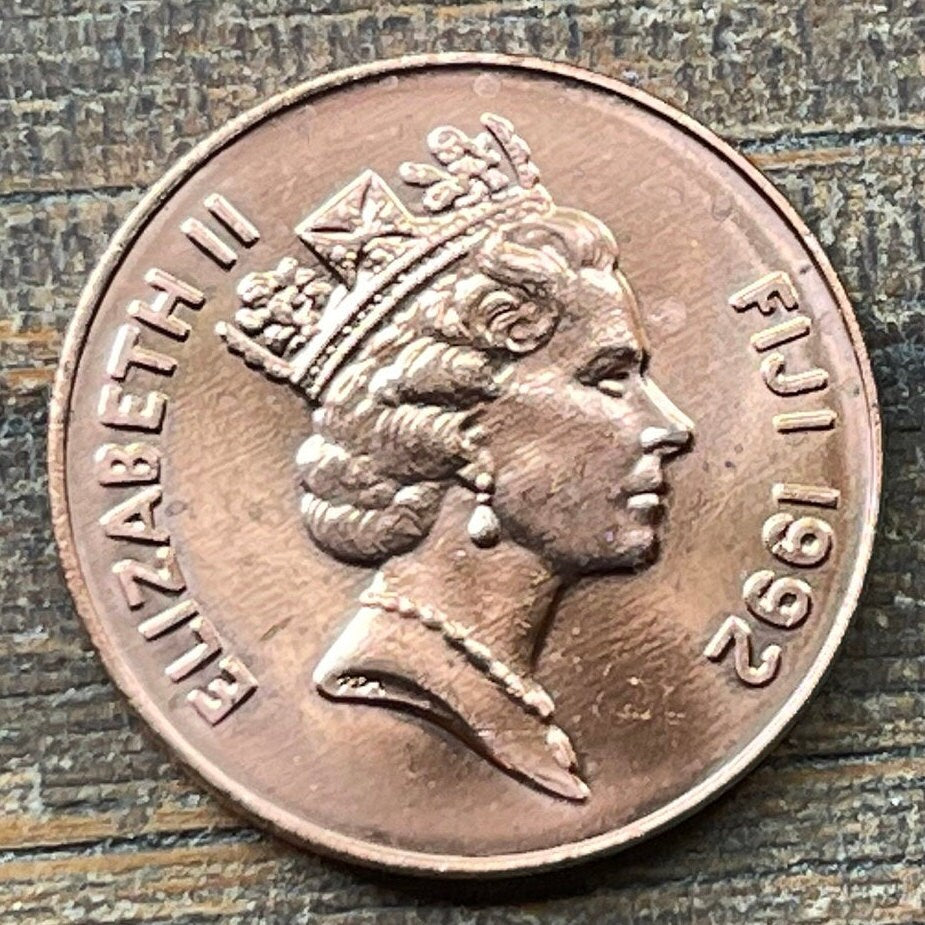elemintalshop
Palm Fan Umbrella 2 Cents Fiji Authentic Coin Money for Jewelry and Craft Making (Iri masei) (Ai viu) (Fiji Fan Palm)
Palm Fan Umbrella 2 Cents Fiji Authentic Coin Money for Jewelry and Craft Making (Iri masei) (Ai viu) (Fiji Fan Palm)
Couldn't load pickup availability
Palm Fan Umbrella 2 Cents Fiji Authentic Coin Money for Jewelry and Craft Making (Iri masei) (Ai viu) (Fiji Fan Palm)
Reverse: Fiji fan palm and denomination
Lettering: 2 cents
Obverse: Crowned portrait of Queen Elizabeth II facing right surrounded by legend
Lettering: ELIZABETH II FIJI 1992
Features
Issuer Fiji
Period Republic (1987-date)
Type Standard circulation coin
Years 1990-2001
Value 2 Cents (0.02 FJD)
Currency Dollar (1969-date)
Composition Copper plated zinc
Weight 3.16 g
Diameter 21.1 mm
Thickness 1.64 mm
Shape Round
Technique Milled
Orientation Medal alignment ↑↑
Demonetized 13 October 2008
Number N# 2952
References KM# 50a
Wikipedia:
In Fiji the leaves of Fiji fan palm were traditionally used as fans, known as Iri masei or Ai viu, that were only used by the chiefs. A light, flexible wood was used to construct a border for the leaves. In Fijian, the term Ai viu refers to both a fan and an umbrella, as the leaves of Fiji fan palm were used for protection from both the sun and the rain.
The leaf was held immediately above the head when it was raining in order and the rain rolled off the leaf behind the head.
The trunk of this species was occasionally used for ridge-beams.
This species was associated with the upper classes and only one or two trees were usually found in a village, as these plants provided enough leaves to meet the material needs of the village chiefs.
********
Pritchardia pacifica, the Fiji fan palm, is a species of palm tree in the genus Pritchardia that is native to Tonga. It is also found on Fiji, Samoa, and the Marquesas however these populations are likely to be human introductions. This species is found in tropical dry forests.
This species reaches a height of 15 metres (49 ft), with a smooth, grayish tan trunk 10 inches (25 cm) in diameter. The 20–30 leaves are 4 feet (1.2 m) wide and equally long, held on petioles 4 feet (1.2 m) in length. The large, flat and rounded leaves are divided 1/4-1/3 into many stiff-tipped segments. The inflorescences are composed of 1-4 panicles, shorter than or equalling the petioles in length. The panicles are branched to 2 orders, with glabrous rachillae. The flowers are followed by small, shiny dark brown to purplish black, spherical fruits, 0.4 inches (1.0 cm) in diameter.
Share










It's fine I'll put it in my collection









